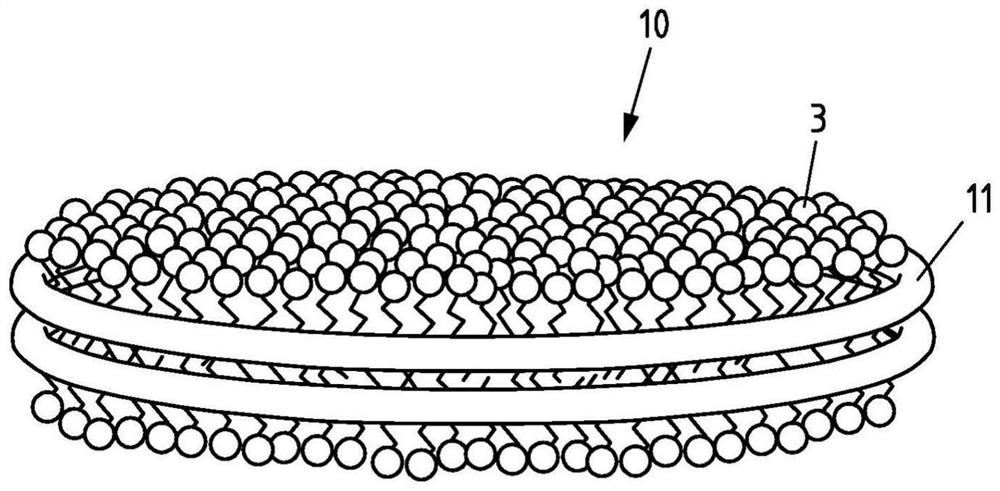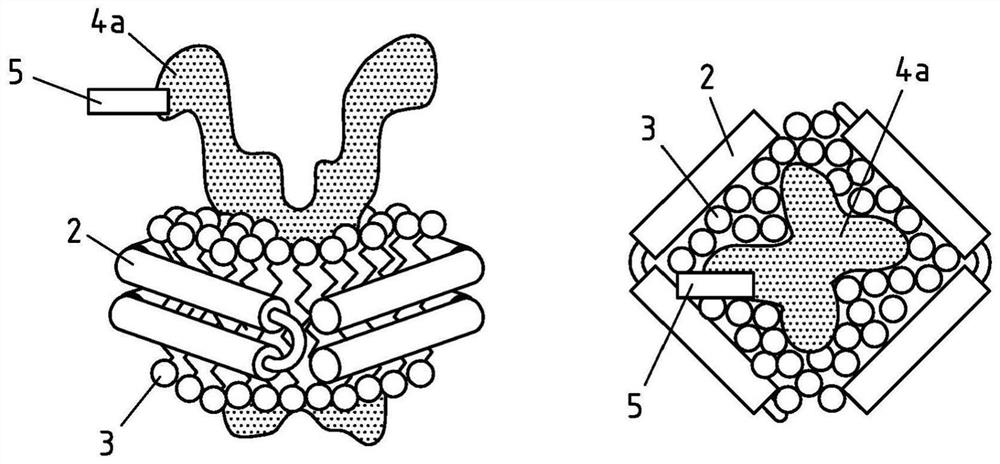Production of salipro particles
A technology of particles and lipoprotein particles, which is applied in the field of preparation of saposin lipoprotein particles, can solve the problems of non-providing, limited water solubility of hydrophobic agents, etc., and achieve the effect of easy freeze-drying
- Summary
- Abstract
- Description
- Claims
- Application Information
AI Technical Summary
Problems solved by technology
Method used
Image
Examples
Embodiment Construction
[0063] The invention provides a method for producing saposin lipoprotein particles, wherein the saposin lipoprotein particles produced comprise
[0064] - saposin-like protein,
[0065] - Lipids, and
[0066] - an optional hydrophobic agent, wherein the hydrophobic agent is different from lipids, and
[0067] (1) wherein the method comprises the following steps:
[0068] a) providing a lipid and an optional hydrophobic agent;
[0069] b.1) contacting the saposin-like protein with a support capable of selectively binding the saposin-like protein to the support in a liquid environment;
[0070] c.1) contacting the support-bound saposin-like protein with a lipid and optionally a hydrophobic agent to enable self-assembly of saposin lipoprotein particles on the support;
[0071] d) optionally, eluting the support-bound saposin lipoprotein particles; or
[0072] (II) Wherein optionally, the method comprises the following steps:
[0073] a) providing hydrophobic agents and lipi...
PUM
| Property | Measurement | Unit |
|---|---|---|
| diameter | aaaaa | aaaaa |
| diameter | aaaaa | aaaaa |
| diameter | aaaaa | aaaaa |
Abstract
Description
Claims
Application Information
 Login to View More
Login to View More - R&D
- Intellectual Property
- Life Sciences
- Materials
- Tech Scout
- Unparalleled Data Quality
- Higher Quality Content
- 60% Fewer Hallucinations
Browse by: Latest US Patents, China's latest patents, Technical Efficacy Thesaurus, Application Domain, Technology Topic, Popular Technical Reports.
© 2025 PatSnap. All rights reserved.Legal|Privacy policy|Modern Slavery Act Transparency Statement|Sitemap|About US| Contact US: help@patsnap.com



